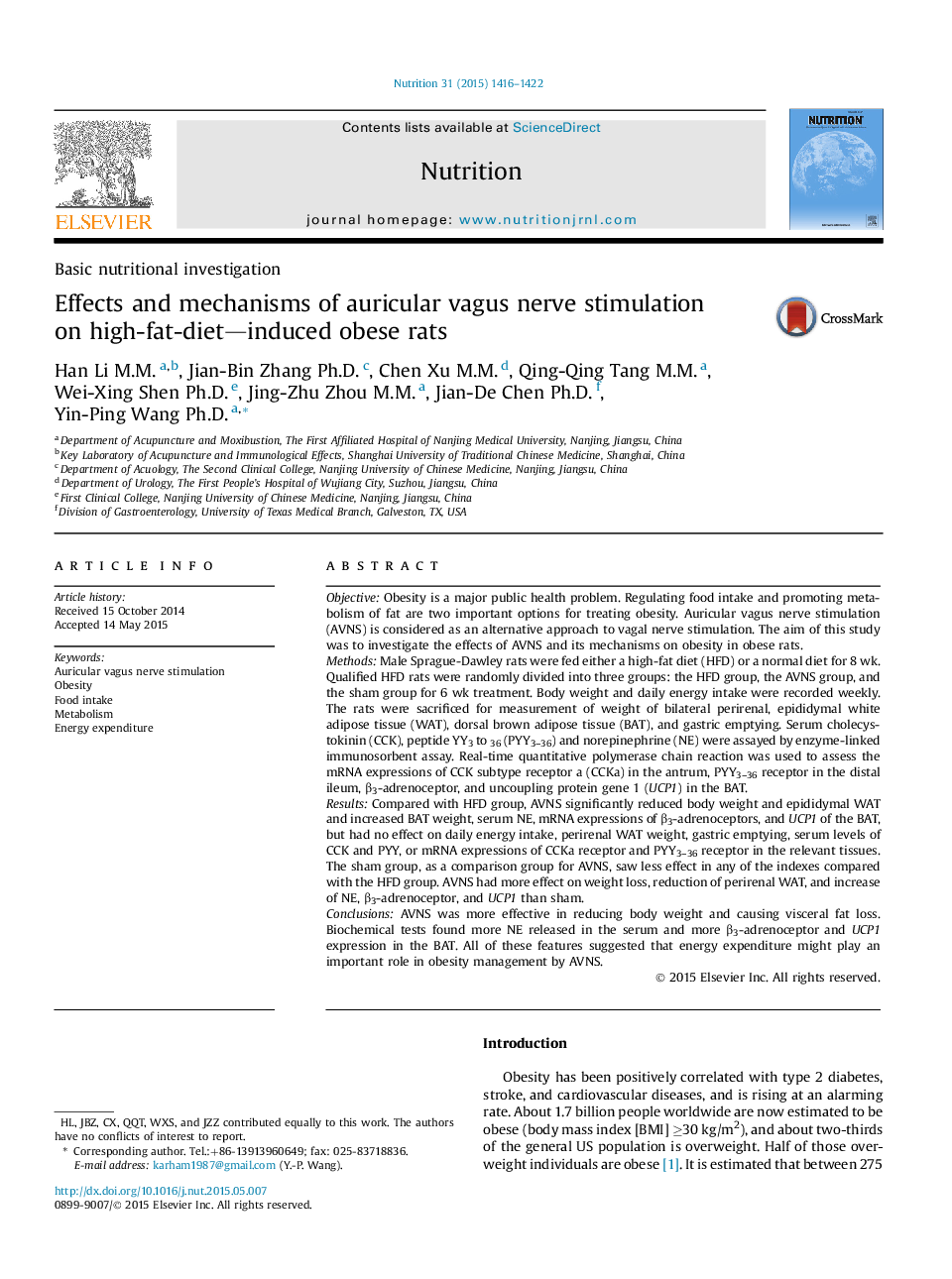| کد مقاله | کد نشریه | سال انتشار | مقاله انگلیسی | نسخه تمام متن |
|---|---|---|---|---|
| 3276281 | 1589667 | 2015 | 7 صفحه PDF | دانلود رایگان |
• To our knowledge, this is the first study to examine auricular vagal nerve stimulation (AVNS) in obese rats.
• We found AVNS affected weight management by energy expenditure but not by food intake.
• Relevant indexes of fat metabolism, including norepinephrine, β3-adrenoceptor, and uncoupling protein gene 1 in brown adipose tissue were significantly enhanced by AVNS.
ObjectiveObesity is a major public health problem. Regulating food intake and promoting metabolism of fat are two important options for treating obesity. Auricular vagus nerve stimulation (AVNS) is considered as an alternative approach to vagal nerve stimulation. The aim of this study was to investigate the effects of AVNS and its mechanisms on obesity in obese rats.MethodsMale Sprague-Dawley rats were fed either a high-fat diet (HFD) or a normal diet for 8 wk. Qualified HFD rats were randomly divided into three groups: the HFD group, the AVNS group, and the sham group for 6 wk treatment. Body weight and daily energy intake were recorded weekly. The rats were sacrificed for measurement of weight of bilateral perirenal, epididymal white adipose tissue (WAT), dorsal brown adipose tissue (BAT), and gastric emptying. Serum cholecystokinin (CCK), peptide YY3 to 36 (PYY3–36) and norepinephrine (NE) were assayed by enzyme-linked immunosorbent assay. Real-time quantitative polymerase chain reaction was used to assess the mRNA expressions of CCK subtype receptor a (CCKa) in the antrum, PYY3–36 receptor in the distal ileum, β3-adrenoceptor, and uncoupling protein gene 1 (UCP1) in the BAT.ResultsCompared with HFD group, AVNS significantly reduced body weight and epididymal WAT and increased BAT weight, serum NE, mRNA expressions of β3-adrenoceptors, and UCP1 of the BAT, but had no effect on daily energy intake, perirenal WAT weight, gastric emptying, serum levels of CCK and PYY, or mRNA expressions of CCKa receptor and PYY3–36 receptor in the relevant tissues. The sham group, as a comparison group for AVNS, saw less effect in any of the indexes compared with the HFD group. AVNS had more effect on weight loss, reduction of perirenal WAT, and increase of NE, β3-adrenoceptor, and UCP1 than sham.ConclusionsAVNS was more effective in reducing body weight and causing visceral fat loss. Biochemical tests found more NE released in the serum and more β3-adrenoceptor and UCP1 expression in the BAT. All of these features suggested that energy expenditure might play an important role in obesity management by AVNS.
Journal: Nutrition - Volume 31, Issues 11–12, November–December 2015, Pages 1416–1422
